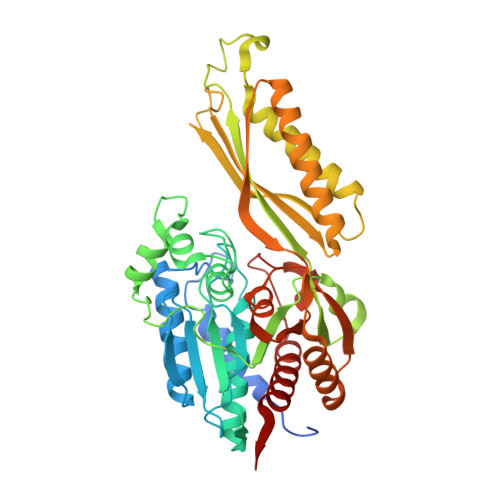Selecting Better Biocatalysts by Complementing Recoded Bacteria.
Rubini, R., Jansen, S.C., Beekhuis, H., Rozeboom, H.J., Mayer, C.(2023) Angew Chem Int Ed Engl 62: e202213942-e202213942
- PubMed: 36342942
- DOI: https://doi.org/10.1002/anie.202213942
- Primary Citation of Related Structures:
8APZ, 8AQ0 - PubMed Abstract:
In vivo selections are powerful tools for the directed evolution of enzymes. However, the need to link enzymatic activity to cellular survival makes selections for enzymes that do not fulfill a metabolic function challenging. Here, we present an in vivo selection strategy that leverages recoded organisms addicted to non-canonical amino acids (ncAAs) to evolve biocatalysts that can provide these building blocks from synthetic precursors. We exemplify our platform by engineering carbamoylases that display catalytic efficiencies more than five orders of magnitude higher than those observed for the wild-type enzyme for ncAA-precursors. As growth rates of bacteria under selective conditions correlate with enzymatic activities, we were able to elicit improved variants from populations by performing serial passaging. By requiring minimal human intervention and no specialized equipment, we surmise that our strategy will become a versatile tool for the in vivo directed evolution of diverse biocatalysts.
- Stratingh Institute for Chemistry, University of Groningen, Nijenborgh 4, 9747 AG, Groningen, The Netherlands.
Organizational Affiliation:





















